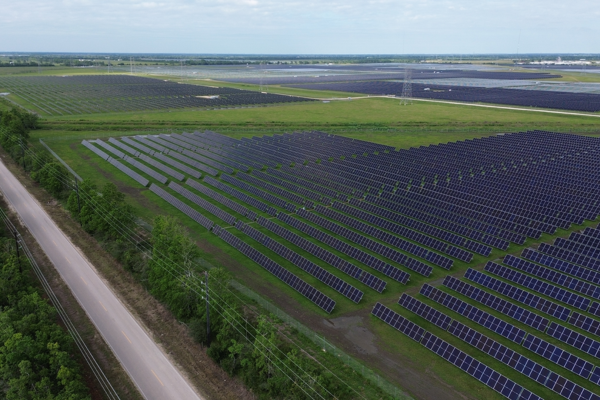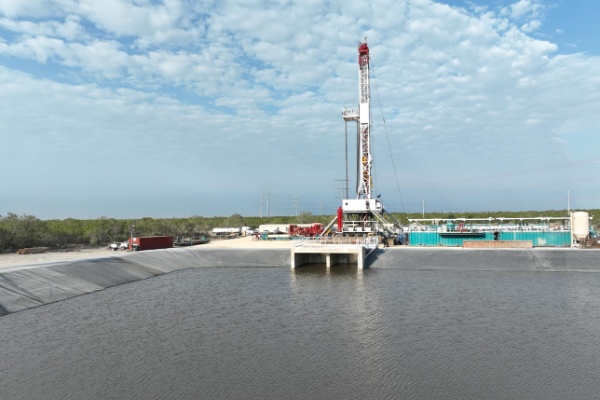Texas Top State for Solar Energy, Houston Secures New Projects
Published Apr 09, 2024 by Hailea Schultz
Boasting a vast portfolio of energy companies, robust infrastructure, abundance of land and business-friendly incentives, Texas is a hub for solar energy, attracting investors, developers and companies to the state.
A new report revealed that solar generation outpaced coal-fired power plants last month in supplying electricity to the Texas power grid, contributing 3.26 million megawatt-hours (MWh). This notable achievement signifies the first time ever that solar energy has exceeded coal in power generation.
In 2023, Texas installed more than 6,500 megawatts of solar generation, leading the nation and surpassing California for the second year in a row, according to Houston Chronicle’s analysis of Wood Mackenzie’s annual Solar Market report.
A recent report by U.S. Energy Information Administration (EIA) projects Texas to continue to lead new utility-scale solar capacity this year, accounting for 35 percent of EIA’s expected 58 percent, or 62.8 gigawatts, of new solar capacity in 2024, signaling a record-breaking addition to the grid.
According to the Solar Energy Industries Association, in the fourth quarter of 2023, Texas had more than $27 billion in investment in solar energy. As a key player in the global energy transition, Houston has been at the forefront of the state’s solar surge, consistently winning bids for large-scale solar projects.
Two Houston area organizations recently received a portion of a $7 billion federal grant to enhance access to solar energy in low-income and disadvantaged communities in Texas. Harris County was awarded nearly $250 million for solar panel and battery installations, along with a training program for residents interested in the solar industry. The Clean Energy Fund of Texas, in partnership with Texas Southern University and other HBCUs, secured over $156 million to install an "estimated 172 megawatts of solar and 84 megawatt-hours of battery systems on its network of 60 to 70 campuses in the South, Southeast and Mid-Atlantic," according to the Houston Chronicle.
The Partnership has played a vital role in securing notable solar energy project victories for the region, including the establishment of Elin Energy's 225,000-square-foot solar panel manufacturing facility in Waller County. With an annual manufacturing capacity of 2,000 megawatts, the facility is anticipated to start operations this year, according to the Katy Times.
Other successful projects include SEG Solar’s PV module manufacturing plant in northwest Harris County. The new facility has an anticipated annual capacity of more than two gigawatts with an anticipated opening date of this year.
“SEG is excited to establish a manufacturing base in Texas and is looking forward to serving the U.S. market with more domestic production,” said SEG’s VP and CLO Michael Eden in a press release. “This facility will help to sustain low carbon, eco centric energy independence in the U.S. for future generations.”
Lightsource, a subsidiary of Houston-based bp, also recently announced that it will develop and operate two new solar farms in Texas, after closing on a substantial $348 million financing package. The projects, located in Brazoria County and Starr County, will have a combined capacity of 288 megawatts, which is enough to power 50,000 homes. Both projects are slated to come online this year.
Last year, global energy corporation and Partnership member TotalEnergies began operations at its new solar farm in south Houston. According to the company’s press release, the 380-megawatt farm dubbed Myrtle Solar, can produce enough green electricity to cover the energy consumption of 70,000 homes.
“This startup is another milestone in achieving our goal to build an integrated and profitable position in Texas, where ERCOT is the main electrical grid operator,” said Vincent Stoquart, Senior Vice President, Renewables at TotalEnergies.
Additionally, phase two of the Sunnyside Solar Farm is expected to be completed this year. The project will transform a 240-acre former landfill into a solar power farm, making it the largest urban solar farm in the nation built on a landfill, according to the City of Houston.
Learn more about Houston’s Energy Transition Initiative.





















